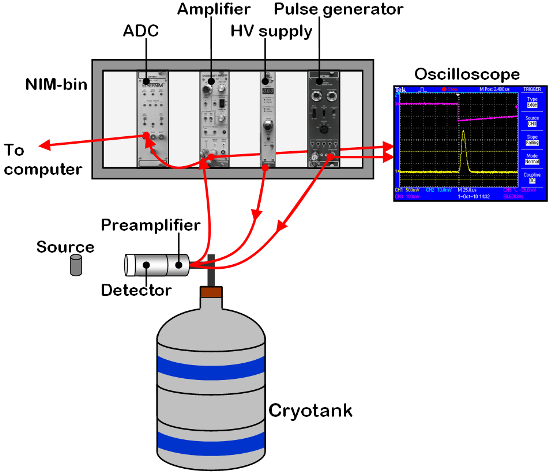
Part 1: Measurements
- Get familar with the Ge-detector system and Maestro
- Make energy calibration for Maestro
- Measure various calibration point-sources (sealed)
- Measure various large-volum calibration sources
- Measure some unknown sources
Part 2: Energy calibration
- Analyse the calibration spectra, for each "good" gamma-peak write down fitted centroid (channel number), net count, FWHM, fitted energy (from Maestro), and library energy (from Berkeley/Lund database).
- Make (in Origin) a plot of library energy as function of gamma-peak centroid (channel number). Then make a linear fit to the data.
- Use the linear fit parameters to calculate the energy your calibration yields for each of your gamma-peaks.
- Calculate the difference between the library energies and the energies from your calibration. Do the same for the Maestro energis (compared to library energies). Plot the differences as function of gamma-peak energies. Evalute the plots!
- Use your energy calibration and try to determine the unknown sources.
Part 3: Efficiency calibration
- Make an efficiency calibration curve (in Origin) based on as many of the calibration sources as possible. Remember that the sources must have the same geometry.
- Evaluate the quality of your efficiency calibration.
- Use the efficiency calibration to calibrate the 152Eu source with unknown desintegration rate. Then assume that this rate is "true" and include the 152Eu data as if it was another calibration source. Is 152Eu a good source for efficiency calibration?
Part 4: Shielding and shielding effects
- Investigate how the shielding affects your spectrum